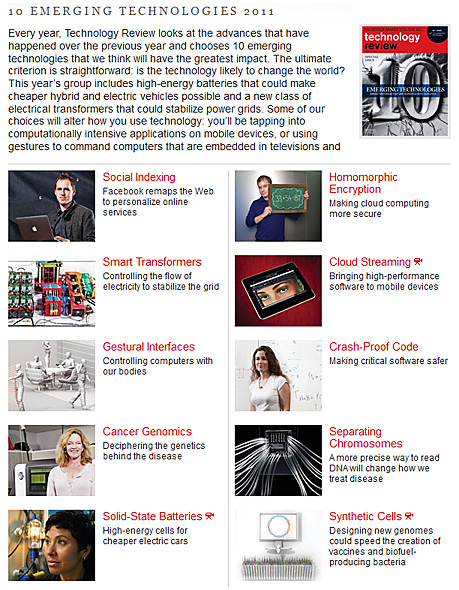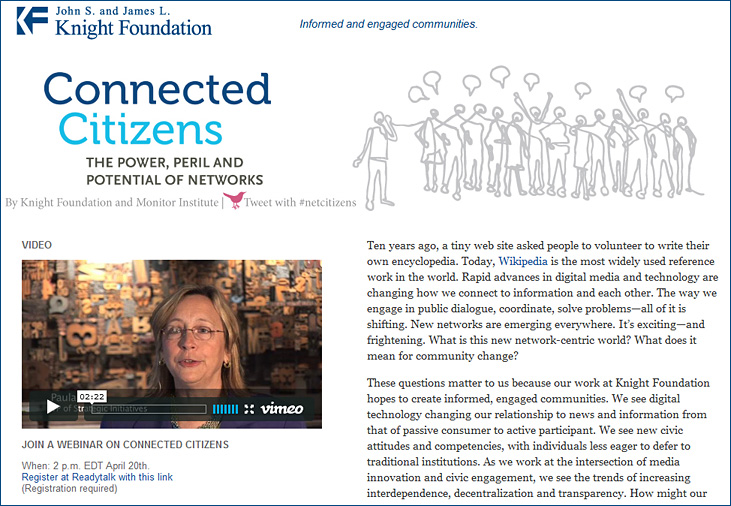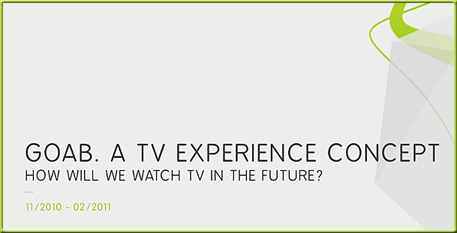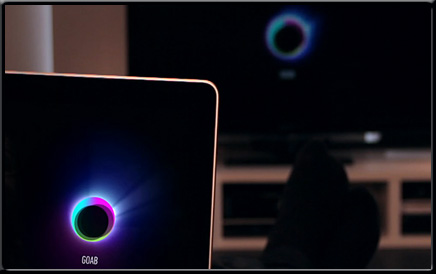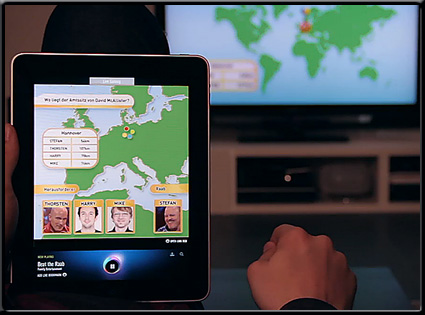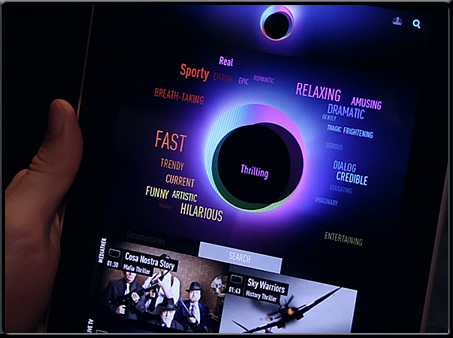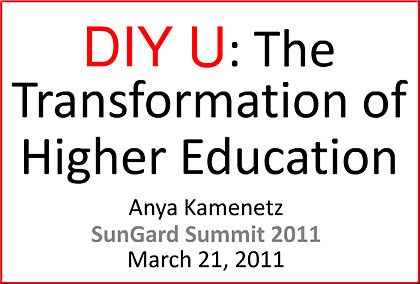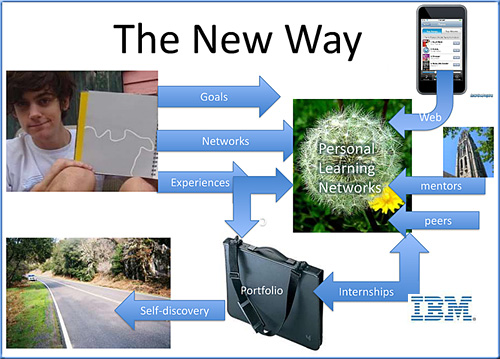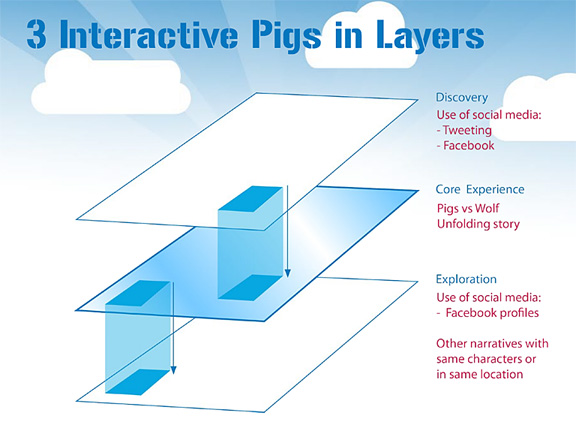MyTVBuddy kicks off as the first pan-European Social TV app on iPad — from appmarket.tv (emphasis DSC)
Excerpt:
Today E-ZONE unveiled its iPad app MyTVBuddy claiming it takes Social TV to the next level of exploration, interaction, engagement and participation by letting users check in to TV programs, watch videos, post messages on Facebook, share Twitter messages, participate in conversations and see where other users are located. MyTVBuddy kicks off with a special launch edition of Eurovision 2011.
MyTVBuddy comes with a solution for turning TV viewing into a social experience by using mobile devices such as the iPad. According to a recent study from Yahoo, nearly 90 percent of people watching television are using a mobile device at the same time. Be it Twitter, Facebook, email or instant messaging, they are doing more than just watching.
From DSC:
TV and entertainment coming up to bat — with learning-related applications on deck! 🙂
Also see:
- Special launch edition: Eurovision 2011 — from mytvbuddy.net
The future of television: Why you won’t recognize your television just a few years from now — from iptvmagazine.com by Scott Puopolo, Cisco
Excerpt:
Imagine you are watching a program on your refrigerator. You browse through the program choices using hand gestures. When you walk into the bathroom, the display of your program automatically transfers to the display inside the bathroom mirror.
Does this seem farfetched? All of these capabilities are here now and research gathered by the Cisco “Internet Business Solutions Group” (IBSG) from manufacturers, content producers, service broadcasters and academic experts identifies amazing predictions of what is going to happen in the TV industry and when these changes are likely to occur.
Analysis of the research shows that the three main influences to these events happening include technology, consumer behavior and business models. Multiple supporting technologies have emerged including displays (digital paper and projection devices), ultra-high bandwidth connections and new types of human interfaces (sensory devices). The ways consumers discover and consume media are changing including using social networks (Digg) and on demand content (YouTube), and participating in the creation of TV programs. Business models are changing from pushing a limited number of linear based channels to aggregating many content sources (NetFlix), recommending relevant programs, and adapting media for specific viewers (personalized ads on Facebook). Using this information, the IBSG has identified 10 Predictions for the future of TV.
Social Learning Examples – in the Workplace — from the Centre for Learning & Performance Technologies by Jane Hart
100+ Examples of the use of Social Media in Learning — from the Centre for Learning & Performance Technologies by Jane Hart
Addendum:
- Using Social Media for Learning: Tools & Practices #BHsocialmedia — from Cammy Bean
Study: 30% of all US households already have TV connected to Internet
 New consumer research from Leichtman Research Group, Inc. (LRG) finds that 30% of all households have at least one television set connected to the Internet via a video game system, a Blu-ray player, and/or the TV set itself — up from 24% a year ago. Overall, 10% of all adults watch video from the Internet via one of these devices at least weekly, compared to 5% last year. This increased usage is heavily driven by Netflix subscribers, with 30% of Netflix subscribers watching video from the Internet via one of these connected devices weekly, compared to 3% weekly use among all non-Netflix subscribers.
New consumer research from Leichtman Research Group, Inc. (LRG) finds that 30% of all households have at least one television set connected to the Internet via a video game system, a Blu-ray player, and/or the TV set itself — up from 24% a year ago. Overall, 10% of all adults watch video from the Internet via one of these devices at least weekly, compared to 5% last year. This increased usage is heavily driven by Netflix subscribers, with 30% of Netflix subscribers watching video from the Internet via one of these connected devices weekly, compared to 3% weekly use among all non-Netflix subscribers.
Also see:
- Online TV Revenues Up as Living Rooms Shift to Digital
- Facebook vs. Twitter: Heavyweights Battle for Social TV
- Second Screen Race Heats Up – Fox Teams up with Miso for Multiplatform Play – Moving Beyond the Checkin
- twowaytv.com
Addendums:
- Study: 123 million connected TVs to ship in 2014
- Yahoo Acquires TV-Tagging Startup IntoNow for $20M to $30M
- What NBC’s New Social TV App Means For The Future Of Television
From DSC:
Why post this? Because:
- These postings demonstrate a continued convergence, a continued trend that is impacting the distribution of content. If it hasn’t already (in some shape or form), online-based learning — with social networking capabilities/functionality baked in — will be entering your living room. Given the budgetary pressures out there, such change may happen sooner rather than later.
- The Forthcoming Walmart of Education is definitely involved here.
Daniel Christian:
A Vision of Our Future Learning Ecosystems
In the near future, as the computer, the television, the telephone (and more) continues to converge, we will most likely enjoy even more powerful capabilities to conveniently create and share our content as well as participate in a global learning ecosystem — whether that be from within our homes and/or from within our schools, colleges, universities and businesses throughout the world.
We will be teachers and students at the same time — even within the same hour — with online-based learning exchanges taking place all over the virtual and physical world. Subject Matter Experts (SME’s) — in the form of online-based tutors, instructors, teachers, and professors — will be available on demand. Even more powerful/accurate/helpful learning engines will be involved behind the scenes in delivering up personalized, customized learning — available 24x7x365. Cloud-based learner profiles may enter the equation as well.
The chances for creativity, innovation, and entrepreneurship that are coming will be mind-blowing! What employers will be looking for — and where they can look for it — may change as well.
What we know today as the “television” will most likely play a significant role in this learning ecosystem of the future. But it won’t be like the TV we’ve come to know. It will be much more interactive and will be aware of who is using it — and what that person is interested in learning about. Technologies/applications like Apple’s AirPlay will become more standard, allowing a person to move from device to device without missing a beat. Transmedia storytellers will thrive in this environment!
Much of the professionally done content will be created by teams of specialists, including the publishers of educational content, and the in-house teams of specialists within colleges, universities, and corporations around the globe. Perhaps consortiums of colleges/universities will each contribute some of the content — more readily accepting previous coursework that was delivered via their consortium’s membership.
An additional thought regarding higher education and K-12 and their Smart Classrooms/Spaces:
For input devices…
The “chalkboards” of the future may be transparent, or they may be on top of a drawing board-sized table or they may be tablet-based. But whatever form they take and whatever is displayed upon them, the ability to annotate will be there; with the resulting graphics saved and instantly distributed. (Eventually, we may get to voice-controlled Smart Classrooms, but we have a ways to go in that area…)
Below are some of the graphics that capture a bit of what I’m seeing in my mind…and in our futures.
Alternatively available as a PowerPoint Presentation (audio forthcoming in a future version)










— from Daniel S. Christian | April 2011
- Hunch brings predictions to Internet TV — from ReadWriteWeb.com by Mike Melanson
- Group video calling comes to iPhone & Android in Fring beta test – from Mashable.com by Jennifer Van Grove
- State of the Art Tutoring is Going Online — from chatam.patch.com by K.F. Rogers (originally saw at Ray Schroeder’s blog)
- Storytelling: Video games’ next killer app — from CNN.com by Scott Steinberg
- YouTube finally launches live streaming portal to select partners — from ReadWriteWeb.com by Marshall Kirkpatrick
- The art of immersion, digital storytelling and transmedia — from Six Pixels of Separation
- Reversing course, U. of California to borrow millions for online classes — from The Chronicle by Josh Keller
- Non-stop Learning Futures conference spans three time zones to mirror demands of 24/7 global society — from 24dash.com
- Call for presentations: Online learning, teaching, and research in the new media ecology — from Ray Schroeder and the Sloan Consortium
…It is clear that we are in the midst of rapid and ongoing changes in the way that we communicate and represent ideas and these changes have profound consequence for how we know, learn, think, and teach in higher education and beyond. The dizzying pace of change is highlighted by the fact that even the relatively new conventions of online education associated with asynchronous learning networks are being challenged by emerging means of access, such as mobile and cloud computing, new forms of communication, such as video streaming and instant messaging, as well as the innovative modes of participation represented in social media.
Addendum on 4-14-11:
- Surprise! Online TV is billion-dollar biz — from cnn.com
Special Issue IRRODL — Connectivism: Design and Delivery of Social Networked Learning
This special issue of IRRODL provides an opportunity to step back and reflect on how these dramatic social and technological changes impact education. In 2004, connectivism was presented as a new theory of learning that addresses learning in complex, social, networked environments. Since that time, numerous articles, open online courses, and online conferences have explored connectivism’s application in education. As articles in this issue reflect, sharp criticism and support have been offered. We hope this issue will help to advance the discussion, to clarify areas of needed research, and to contribute to ongoing debate about the influence of the Internet on teaching and learning.
The future of broadcast is more than integrating tweets into programming — from Brian Solis
The future of broadcast is literally at our fingertips…
Dear Web Design Community, Where Have You Gone? — from SmashingMagazine.com by Vitaly Friedman









